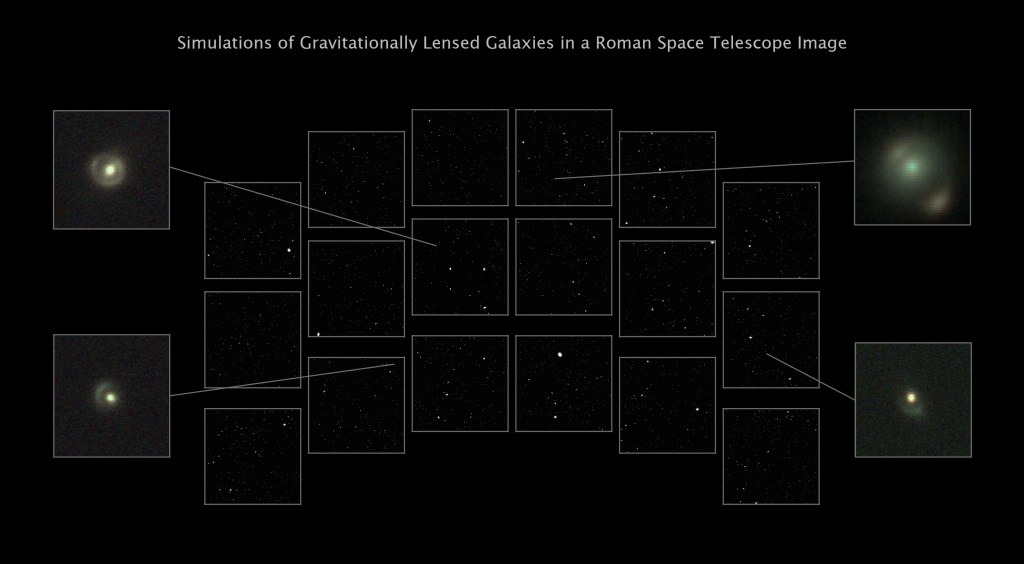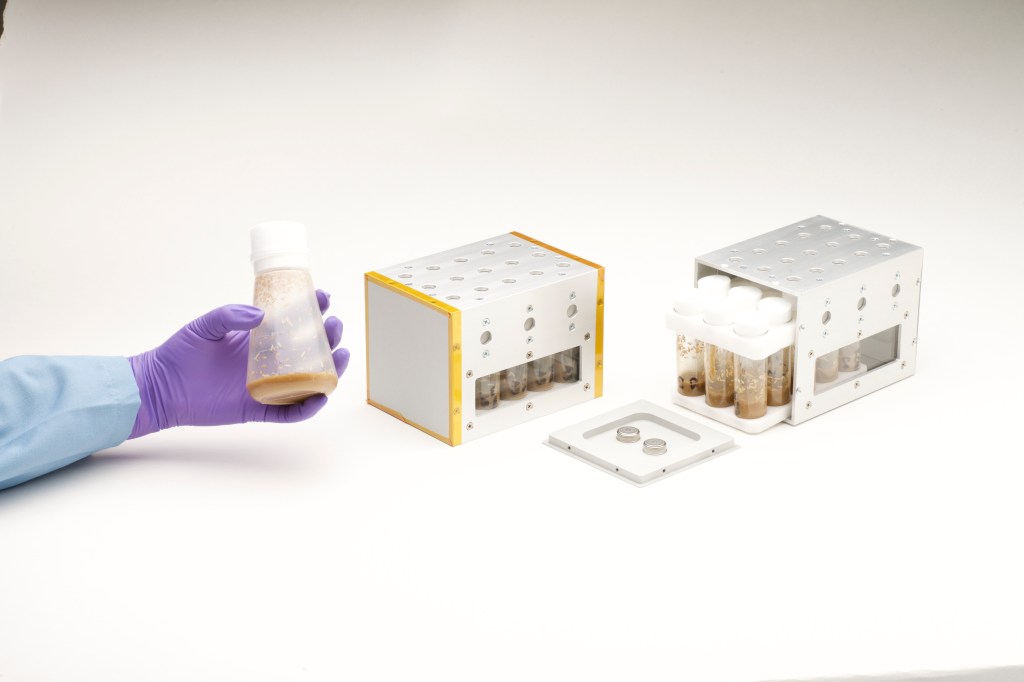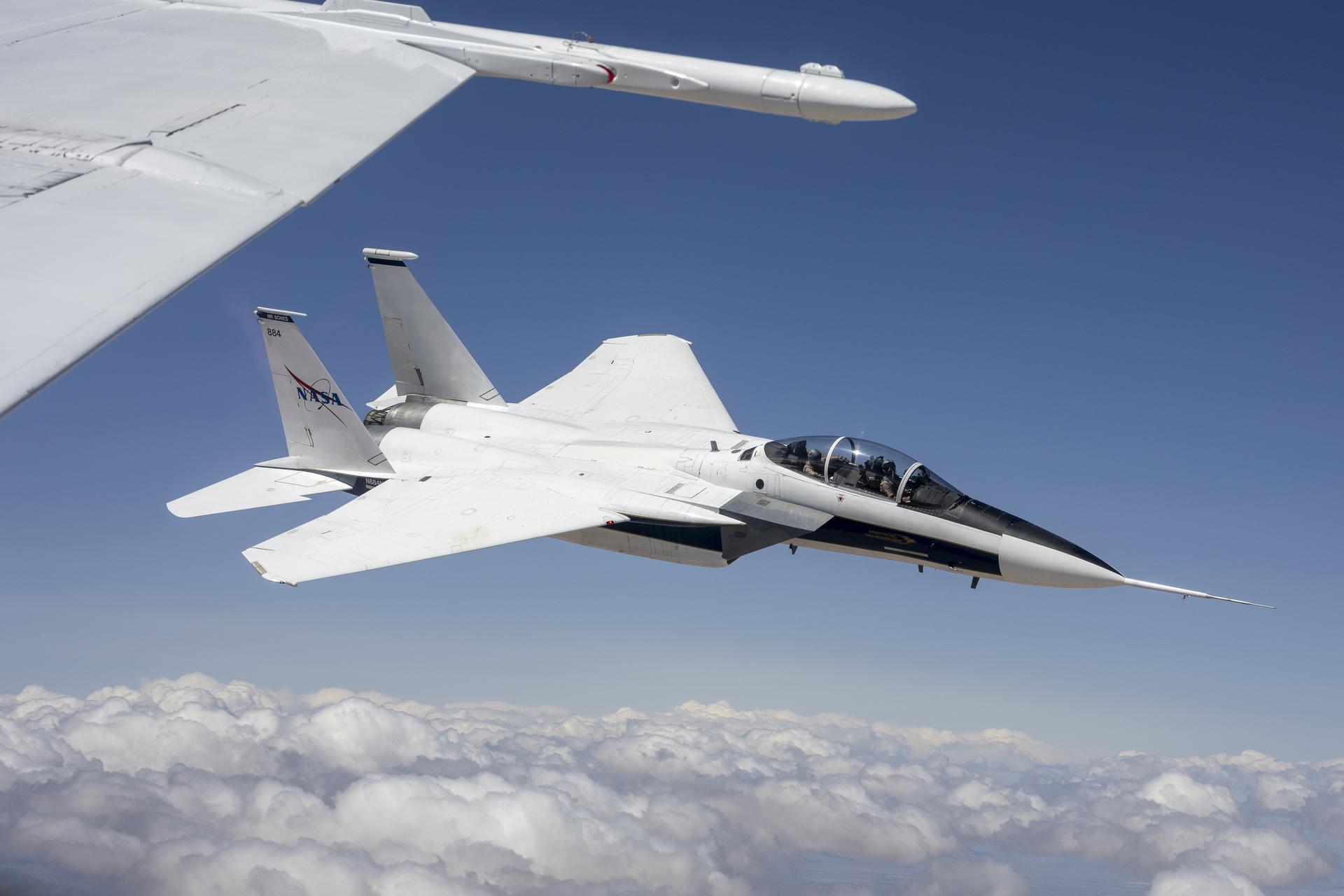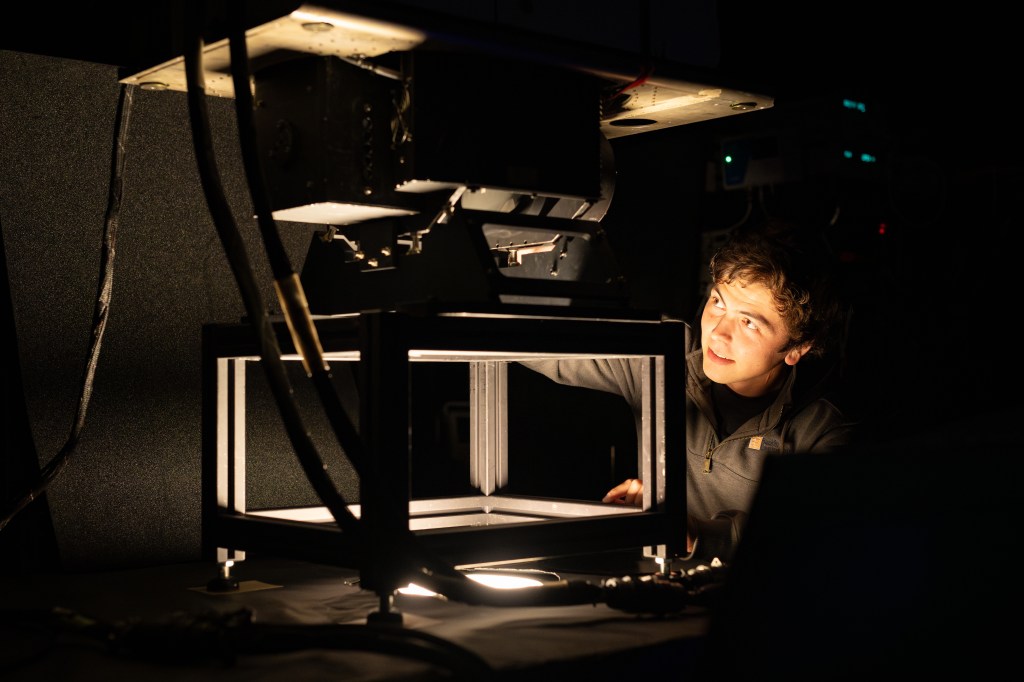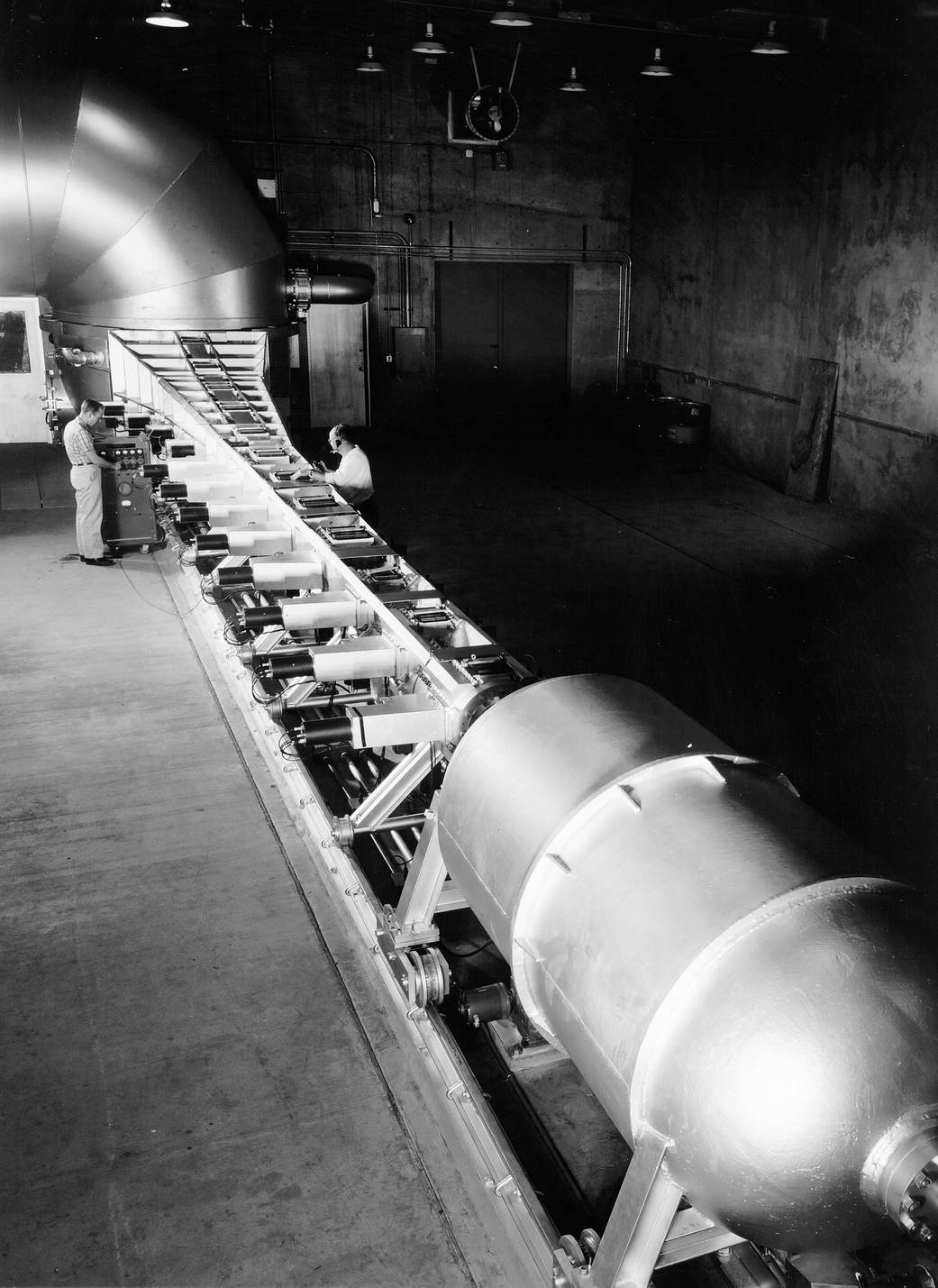
In this 1959 image of the Atmospheric Entry Simulator at NASA’s Ames Research Center, a large tank containing air under high pressure is visible in the foreground. In the middle ground directly behind is a special trumpet-shaped nozzle, contoured so that air flowing through it gradually changes in density in the same way that the Earth’s atmosphere changes in density with altitude.
Not visible in this photograph is a high speed gun used to launch a test model at earth re-entry speed (17,000 mph) upstream through the nozzle while air is flowing through it.
Technicians are adjusting the spark shadowgraph station required to make accurate picture and time recording of the model in flight. When a gun-launched model flies at full re-entry velocity into the simulator nozzle, it experiences the decelerations, stresses, pressures and temperatures of actual re-entry during a few thousandths of a second. The simulator quickly and economically determined in the laboratory whether a specific design could survive atmospheric re-entry.Image credit: NASA


